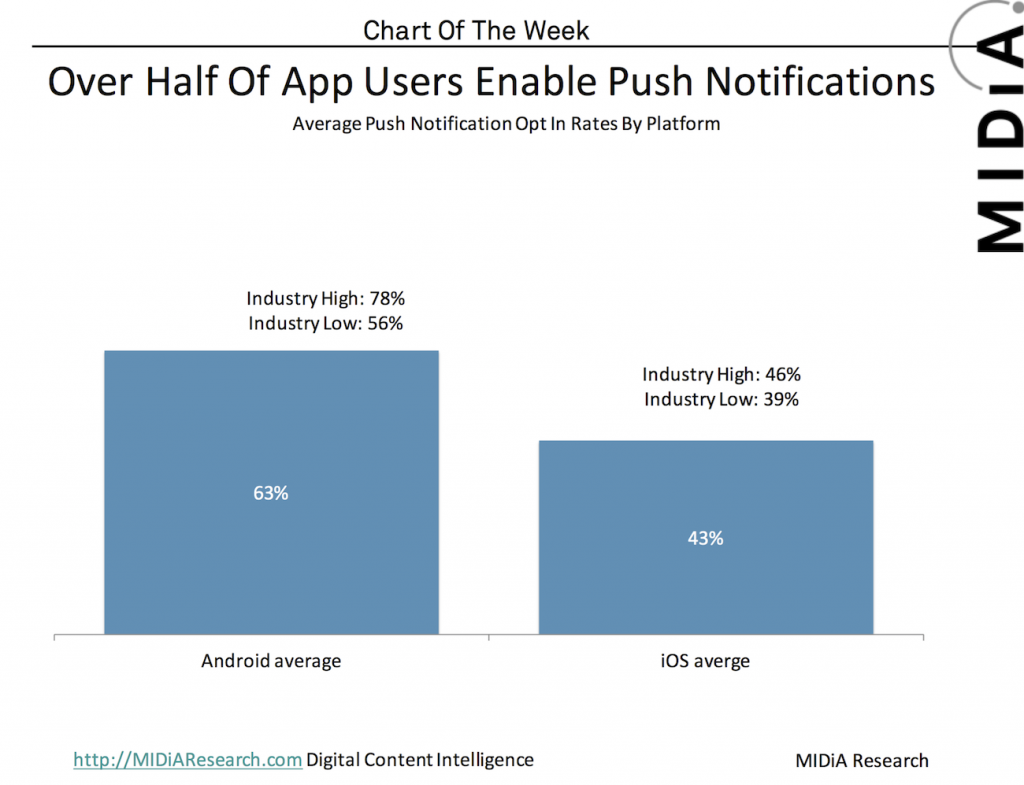As you can see from the chart below. Only about half of users enable push notifications for an app. This may be because they turn it off initially or they do so later. We will discuss below.

When users first encounter push notifications, they appreciate the convenience and value they bring. However, as the frequency and relevance of these notifications fluctuate, so does the perceived value. It is crucial for businesses to strike the right balance between delivering valuable content and respecting user preferences.
Reasons for Opting out of Push Notifications
Non-Personalized Content
Push Notifications should be tailored for the user. Providing a tailored experience based on their interaction with an app. When users find that too many notifications do not contain relevant information they will disable Push Notifications for that app.
Received Too Many Push Notifications
If users feel they are receiving too many Push Notifications from an app such that it is distracting them in their real life. Then they will disable Push Notifications on that app. Push Notifications should be strategic and only provide users with information that is relevant and only when necessary. As well as reducing the overall pushes to only those that are necessary and important for the user.
Defaulting to Opting Out of All Push Notifications
Some users will opt out of Push Notifications for all apps when that initial dialog to turn on notifications pops up. This could be because of bad experiences in the past or the user just doesn’t like Push Notifications in general. In any case these users will opt out of all Push Notifications and that is something the app should be ready to handle and support.
User has No Interest in Hearing from the Brand
For some users they will decide for some apps or brands they don’t want to receive Push Notifications. Again it is likely there is nothing you can do as the developer of the app. This just needs to be handlded.

